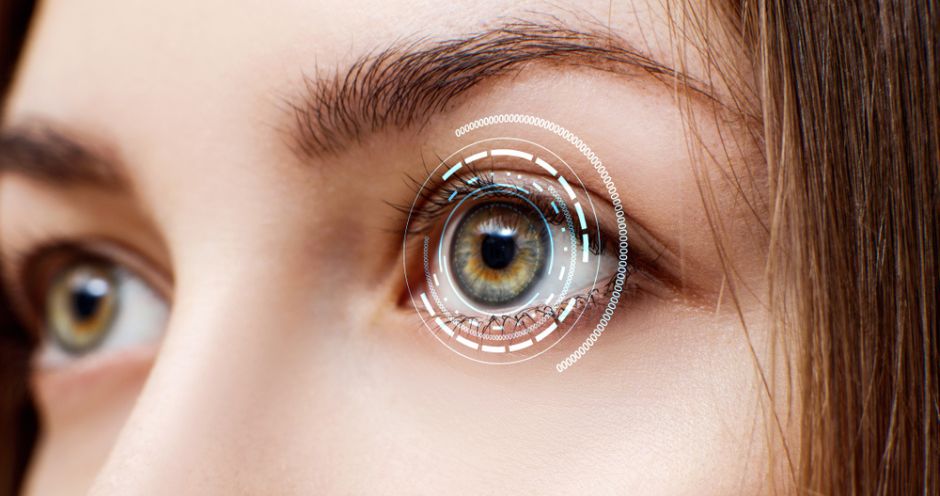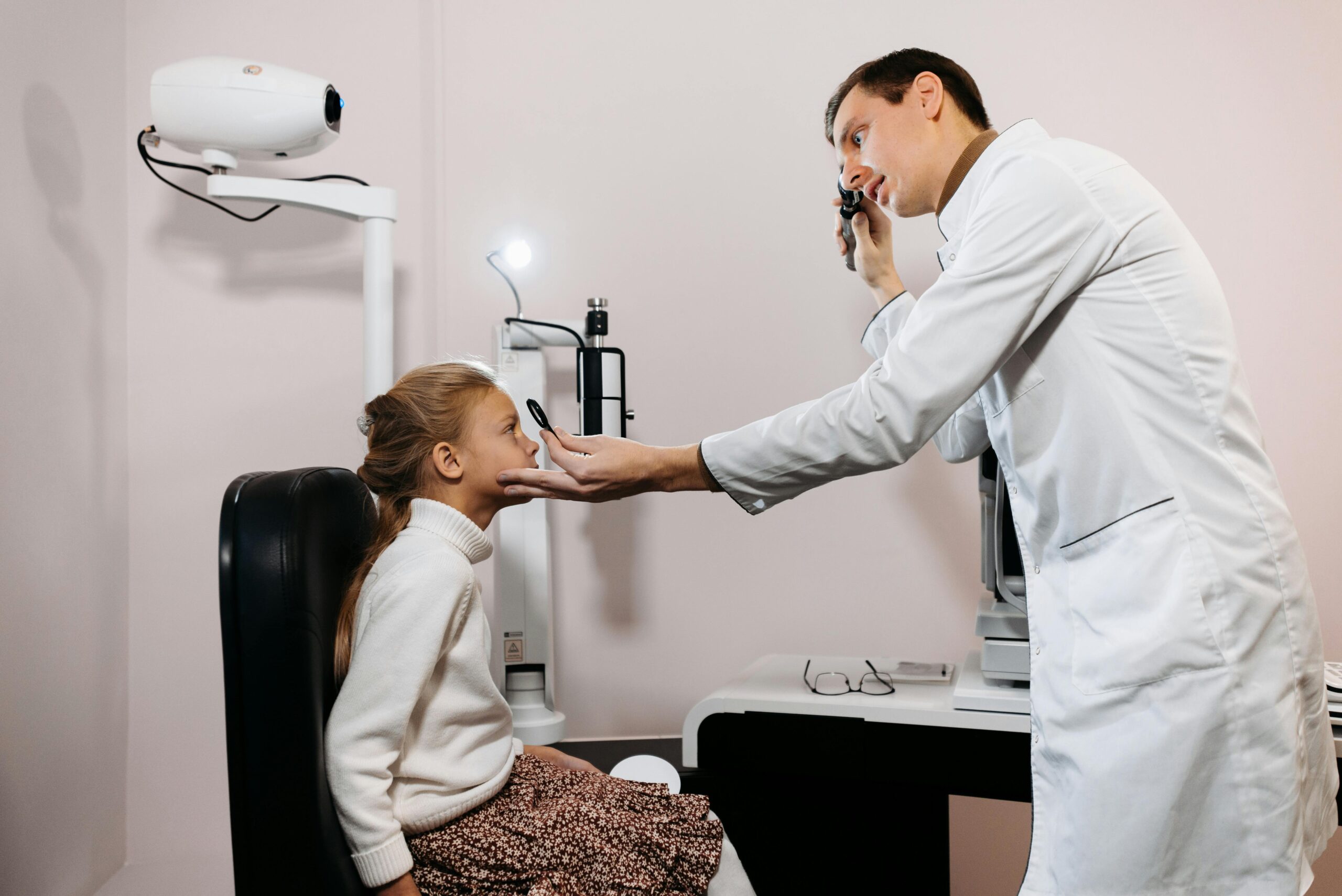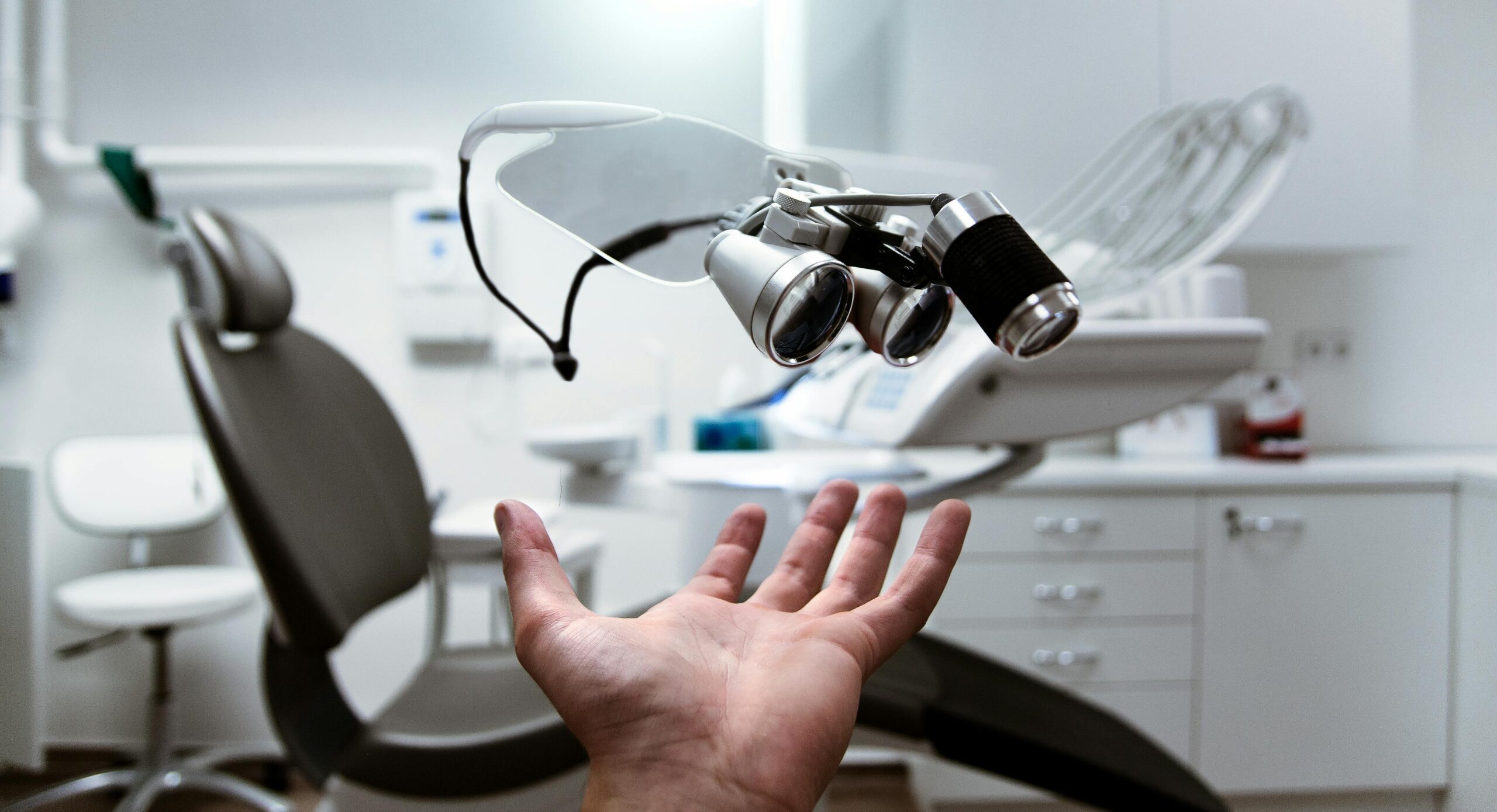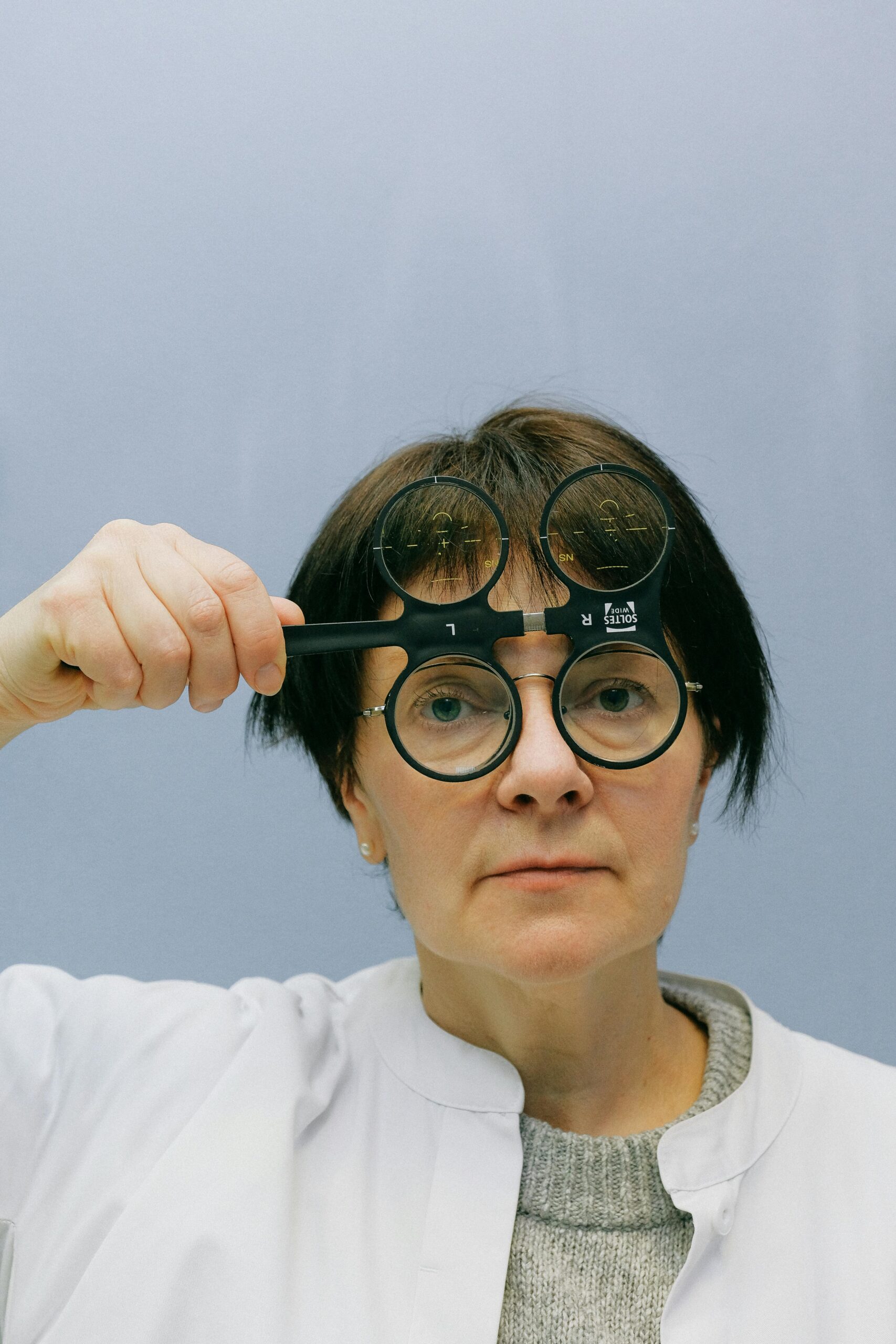Signs of retinal damage include sudden flashes of light, floaters (dark spots or lines in vision), sudden decrease in vision, distortion or waviness in vision, or a shadow or curtain-like effect in the peripheral vision. If you experience any of these symptoms, consult an eye specialist promptly for evaluation. The retina, a delicate tissue lining the back of the eye, is vital for vision as it converts light into electrical signals that the brain interprets as images. However, various factors such as age, underlying health conditions, and injuries can damage the retina, leading to vision impairment or even blindness. In this comprehensive guide, we will delve into the signs and symptoms of retina damage, explore the risk factors involved, discuss diagnostic methods, treatment options, and offer practical tips for prevention and management.
Consult With Retina Specialist in Dubai
How Retina Works?
The retina comprises layers of specialized cells, including photoreceptors (rods and cones), which capture light and transmit visual information to the brain via the optic nerve. Rods enable vision in low-light conditions, while cones facilitate color vision and detail perception. The macula, a small central area of the retina, is responsible for sharp, central vision essential for activities like reading and driving.
When the retina sustains damage, whether due to age-related changes, diseases, or trauma, it can disrupt the transmission of visual signals, resulting in various symptoms and visual disturbances. Understanding the structure and function of the retina is crucial for recognizing and addressing potential issues.
Can Retina Heal Without Surgery?
Signs and Symptoms of Retina Damage
- Recognizing the signs and symptoms of retina damage is paramount for early intervention and preservation of vision. Common indicators include:
- Blurriness or haziness in vision, which can affect one or both eyes, making it difficult to see objects clearly.
- Perceiving spots, specks, or flashes of light in the field of vision, which may indicate the presence of vitreous detachments or retinal tears.
- Partial or complete loss of vision, which can occur suddenly or progressively over time, requiring immediate medical attention.
- Distortions in vision, such as straight lines appearing wavy or distorted, or difficulty distinguishing colors, suggesting underlying retinal abnormalities.
It’s essential to pay attention to these symptoms and promptly consult an eye care professional if they occur, as they may signify underlying retinal damage or disease.
What is the retina and pupil?
Risk Factors for Retina Damage
Several factors can increase the likelihood of developing retinal damage, including:
Age-Related Changes: The risk of age-related retinal conditions such as macular degeneration and retinal detachment increases with advancing age.
Eye Conditions and Diseases: Pre-existing eye conditions like glaucoma, cataracts, or inflammatory disorders such as uveitis can compromise retinal health.
Systemic Health Conditions: Diseases such as diabetes, hypertension, and autoimmune disorders can impact retinal blood flow and function, predisposing individuals to diabetic retinopathy and other vascular abnormalities.
What Vitamin Deficiency is Retina?
Lifestyle Factors: Unhealthy lifestyle habits such as smoking, excessive alcohol consumption, poor nutrition, and prolonged exposure to UV radiation can contribute to retinal damage and vision loss.
Understanding these risk factors empowers individuals to take proactive measures to protect their retinal health and reduce the likelihood of developing vision-threatening conditions.
Read More: Can Retina Problems be Cured?
Diagnostic Tests for Retina Damage
Diagnosing retinal damage typically involves a comprehensive eye examination by a qualified eye care professional. In addition to assessing visual acuity and examining the external and internal structures of the eye, various diagnostic tests may be employed, including:
Optical Coherence Tomography (OCT): This non-invasive imaging technique generates high-resolution cross-sectional images of the retina, allowing for the detection of abnormalities such as fluid accumulation, retinal thinning, or structural changes.
Fundus Photography: High-definition photographs of the retina are captured to document baseline findings, monitor disease progression, and aid in treatment planning.
Fluorescein Angiography: A specialized imaging test in which a fluorescent dye is injected into the bloodstream, highlighting blood vessels in the retina and providing valuable information about circulation, leakage, and abnormal vessel growth.
Electrophysiological Tests: These tests measure the electrical responses of the retina to light stimuli, helping diagnose conditions such as retinitis pigmentosa and assess overall retinal function.
By combining clinical evaluation with advanced diagnostic modalities, eye care professionals can accurately diagnose retinal disorders and formulate customized treatment plans tailored to each patient’s needs.
Is Retina Surgery Painful?
When to See a Doctor
Prompt evaluation by an eye specialist is essential if you experience any concerning symptoms or notice changes in your vision. Urgent signs that warrant immediate medical attention include sudden onset of vision loss, flashes of light, a curtain-like shadow or veil obscuring your visual field, or a sudden increase in floaters. Even if symptoms seem mild or transient, it’s crucial to seek timely evaluation to rule out underlying retinal pathology and prevent irreversible vision loss.
Treatment Options for Retina Damage
Treatment for retinal damage aims to address the underlying cause, alleviate symptoms, and preserve or restore vision whenever possible. Depending on the specific diagnosis and severity of the condition, treatment options may include:
Medications: Anti-VEGF drugs, corticosteroids, and other intraocular medications may be administered to manage retinal swelling, neovascularization, or inflammation associated with conditions such as macular degeneration, diabetic retinopathy, or uveitis.
Laser Therapy: Laser photocoagulation, photodynamic therapy, or focal/grid laser treatment may be utilized to seal leaking blood vessels, reduce abnormal vessel growth, or induce regression of abnormal retinal tissue.
Surgery: Surgical intervention may be necessary for conditions such as retinal detachment, macular hole, or epiretinal membrane. Procedures such as vitrectomy, scleral buckle surgery, or pneumatic retinopexy may be performed to reattach the retina, remove vitreous traction, or repair structural abnormalities.
The choice of treatment depends on various factors, including the underlying pathology, extent of retinal involvement, visual acuity, and patient preferences. Your eye care provider will discuss treatment options, potential risks and benefits, and expected outcomes to help you make informed decisions regarding your care.
What is the Cost of Retina Surgery in UAE
Prevention and Management Strategies
While some risk factors for retinal damage, such as age and genetics, are beyond our control, several preventive measures can help safeguard retinal health and reduce the risk of vision loss:
Adopt a Healthy Lifestyle: Eat a balanced diet rich in antioxidant-rich fruits and vegetables, omega-3 fatty acids, and vitamins A, C, and E to support retinal health and overall eye function. Avoid smoking and limit alcohol consumption, as these habits can contribute to vascular dysfunction and accelerate retinal damage.
Protective Eyewear: Wear sunglasses with UV protection and safety goggles or protective eyewear when engaging in activities that pose a risk of eye injury, such as sports, yard work, or construction projects.
Regular Eye Examinations: Schedule comprehensive eye examinations with an eye care professional at least once a year or as recommended based on your age, medical history, and risk factors. Routine eye exams can detect early signs of retinal disease, allowing for prompt intervention and preservation of vision.
Manage Underlying Health Conditions: Take proactive steps to manage systemic health conditions such as diabetes, hypertension, and hypercholesterolemia through lifestyle modifications, medication adherence, and regular medical follow-up. Well-controlled systemic health can help minimize the risk of diabetic retinopathy, hypertensive retinopathy, and other vascular complications affecting the retina.
By integrating these strategies into your daily routine and prioritizing proactive eye care, you can optimize retinal health, preserve visual function, and enjoy a lifetime of clear, comfortable vision.
What are the symptoms of a weak retina?
Final Thoughts
In conclusion, understanding the signs, symptoms, risk factors, and diagnostic approaches for retinal damage is crucial for maintaining optimal eye health and preserving vision. By remaining vigilant, seeking timely evaluation, and adhering to preventive measures, individuals can minimize the risk of retinal pathology and mitigate the impact of vision-threatening conditions. Remember, your eyes are irreplaceable, so prioritize proactive eye care and schedule regular comprehensive eye examinations with a qualified eye care professional to safeguard your precious sight.
Schedule a Consultation with Dr. Qasim Qasem, Eye Specialist in Dubai
Are you experiencing symptoms of retinal damage or seeking expert eye care in Dubai? Look no further than Dr. Qasim Qasem, one of the best ophthalmologist in Dubai specializing in the diagnosis and treatment of retinal disorders.
With extensive experience and a commitment to excellence, Dr. Qasim Qasem offers personalized care and cutting-edge treatments to patients with a wide range of eye conditions. Whether you’re dealing with age-related macular degeneration, diabetic retinopathy, retinal detachment, or other retinal disorders, Dr. Qasim Qasem and his dedicated team are here to help.











